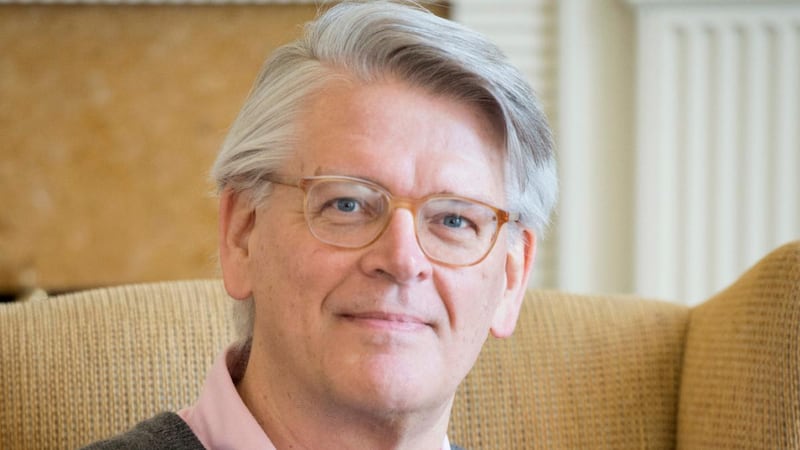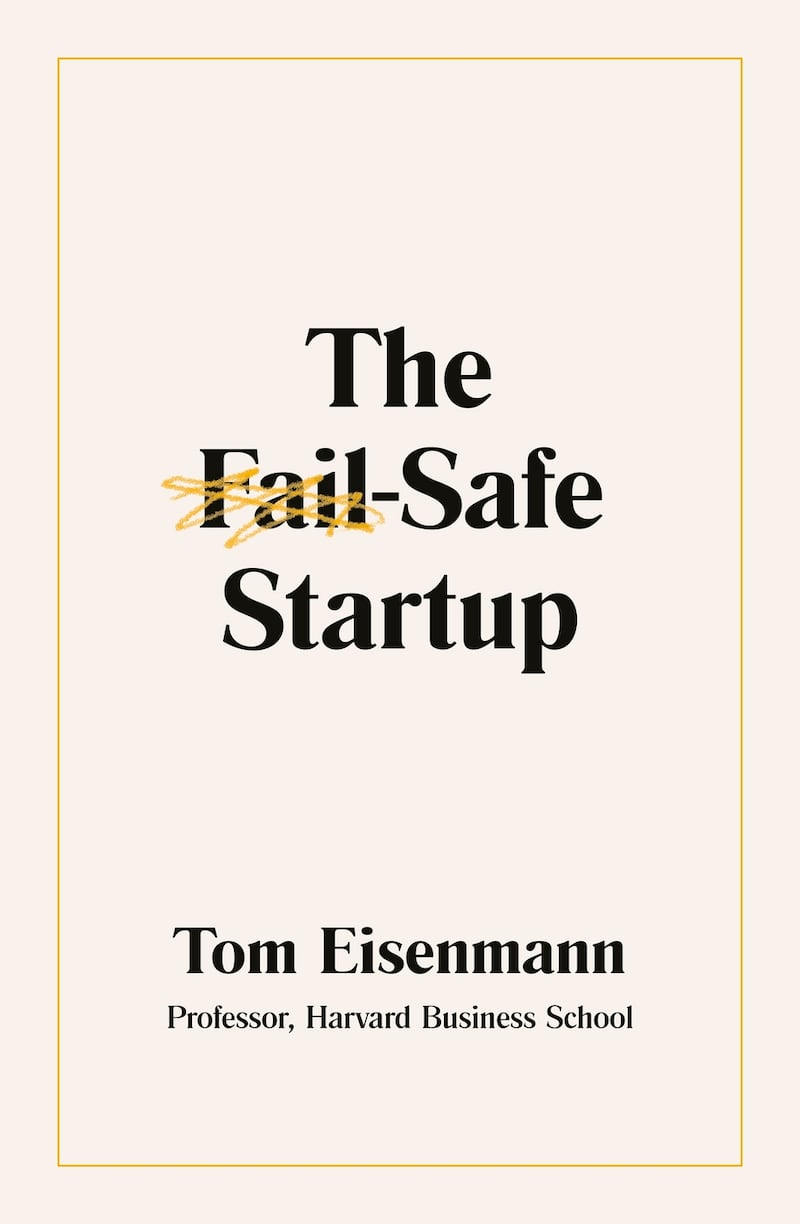When Harvard Business School professor Tom Eisenmann devised a programme based around case studies of business failure, he worried at first that immersing his MBA students in tales of defeat would depress them. He was pleasantly surprised, however, that it had the opposite and very galvanising effect.
Failure, he says, provides great lessons for success. “It’s easier to remember all the things not to do rather than the things that you should. I think focusing on failure is a very powerful thing for entrepreneurs,” he tells The Irish Times.
Harvard Business School is also an impressive start-up factory. Its alumni have founded 1,300 venture capital-backed start-ups since 2006. Nineteen of these have achieved unicorn status (over $1 billion valuation) over the last decade.
There have also been plenty of failures, however, even among those who followed the classic lean start-up models taught on campus.

“My inability to explain why these high-potential companies failed to live up to their promise cast doubt as to whether the playbook I was teaching at HBS [Havard Business School] was as bulletproof as I thought . . . That’s when I became determined to do everything in my power to get to the bottom of this question of why start-ups fail,” he says.
Lean start-up models
Eisenmann’s extensive original research on the topic, which includes detailed surveys of 470 ventures, forms the basis of a new book, The Fail-Safe Startup, more bluntly styled, Why Startups Fail, in its US edition.
The book provides an intelligent and nuanced analysis of the many and varied factors involved in failure, going beyond simplistic explanations. Eisenmann has identified six distinct patterns (see below) but in distilling it further he offers the following conclusion: “The biggest culprit behind failure is not finding a strong unmet need and a differentiated and defendable solution for that need.”
With most significant start-ups now following the lean start-up models popularised by figures such as Steve Blank and Eric Ries, it is perhaps surprising that so many fail. The lean models themselves are not at fault, Eisenmann observes. Instead, it is the selective application of parts of them that is to blame.
Blank is right when he urges entrepreneurs to get out of the building and do their research properly with potential customers but most people don’t follow the full lean start-up canon, he says. You need thorough customer discovery to find out if you have met an undiscovered need and have validated and tested several different models before selecting your minimum viable product (MVP). Start-ups typically truncate this process in their urge to launch, building their MVPs too quickly.
“With their bias for action approach, entrepreneurs typically skip key steps. Launching quickly feels like the right thing to do when your team is small and your cash is limited. It takes real discipline to put in the month or two of work you should before you start building and selling.”
There are any number of things that can trip founders up. Looking to grow too quickly or cover too much of a market space is just one example and when considering options for offering differentiated products for different markets, Eisenmann agrees that concentrating on conquering one thoroughly before moving on to others is generally best, even if that limits revenue growth in the short term.
He notes that confidence is a necessary attribute in start-up entrepreneurs and it fits with the gritty resilience required to win against difficult challenges often faced on their journey. The underconfident, by contrast, tend to throw in the towel too easily or drift indecisively, undermining stakeholder belief.
Too much confidence, however, can lead to delusional thinking.
“Some ventures are so audaciously bold that you need a really charismatic founder, a pied-piper figure to get the hundreds of millions of dollars required as well as everything else you need to develop something that won’t come to market for years,” he says.
The term “reality distortion field” (a Star Wars reference), has been used to describe the power of such founders and sometimes, as in the case of Apple’s Steve Jobs, their massive bets do pay off. When these ventures fail, however, the magnitude of their disaster is like an asteroid strike. Delusional overconfidence needs to be kept in check, he warns.
Serial entrepreneurs are more successful than first-timers, his research bears out. They may have learned helpful lessons along the way but don’t underestimate that the factors that made them successful in the first instance – such as their background advantages and privileges – can also help in replicating their earlier successes. A “halo effect” may also be at play with stakeholders on second and subsequent ventures, he notes.
Mirroring the work he does on campus, Eisenmann devotes a large section of the book to detailed case studies of failures. Some of these ventures look smart and seem destined for success but are doomed by factors such as over-confident expansion based on early success, technology shortcomings, superior competitor models and a host of other issues.
In assessing the likelihood of success, venture capitalists among others often distinguish between what they call the horse (the venture) and the jockey (the entrepreneur) but Eisenmann says these debates are not helpful. A great concept, he says, is necessary but not sufficient for start-up success while many VC think that a talented jockey is more important than a fast horse. A lot more is needed ultimately to win a race.
Blame
There is also a tendency to blame one factor for failure when multiple factors are often responsible.
“Humans are wired to oversimplify explanations for both good and bad outcomes through what philosophers call the single cause fallacy. We shine a spotlight on one big reason for a calamity,” he notes.
Failure comes in many shades and is not always inherently bad. Amazon’s Jeff Bezos and others have popularised the notion that it is a necessary element in the process of innovation. It needs a definition clearly and Eisenmann offers one: a venture has failed, he says, if its early investors did not – or never will – get back more money than they put it.
Sometimes parts of the venture have worth and can be sold or some underlying technology or asset can be leveraged elsewhere by others, offering face-saving parachutes for founders.
True failure is rough at a human level though and Eisenmann’s advice for those who have suffered this fate is to take time to reflect and allow bruised egos to recover, given that entrepreneurs’ identities are often intertwined with their ventures. Extreme reactions are common, he says.
“Some will deny personal responsibility. They will say: the cofounder dropped the ball, the venture capitalists pushed us too hard, the regulators were irrational. Some of that may be true but who chose the cofounder and the venture capitalists? At the other extreme, people beat themselves up and unnecessarily brand themselves as unsuited to entrepreneurship.”
Society loses in both cases, he concludes. The responsibility deniers will go again and often repeat their mistakes while those who have beaten themselves up won’t ever try again.
***********
Why start-ups fail: six common reasons
Eisenmann has identified six distinct patterns that account for many start-up failures:
1. Bad bedfellows: Start-up success is thought to rest largely on the founder’s talents and instincts. But the wrong team, investors, or partners can sink a venture just as quickly.
2. False starts: In following the oft-cited advice to “fail fast” and to “launch before you’re ready”, founders risk wasting time and capital on the wrong solutions.
3. False promises: Success with early adopters can be misleading and give founders unwarranted confidence to expand.
4. Speed traps: Despite the pressure to “get big fast”, hypergrowth can spell disaster for even the most promising ventures.
5. Help wanted: Rapidly scaling start-ups need lots of capital and talent, but they can make mistakes that leave them suddenly in short supply of both.
6. Cascading miracles: Silicon Valley exhorts entrepreneurs to dream big. But the bigger the vision, the more things that can go wrong.
The Fail-Safe Startup by Tom Eisenmann is published by Penguin/Random House.


















